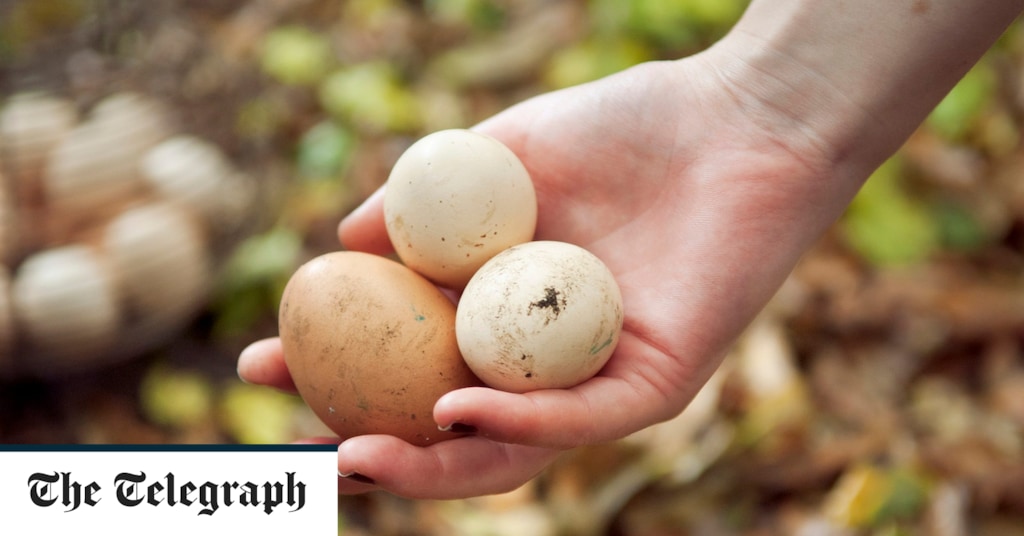One potential problem here is the so-called “cocktail effect” – the mixing of different pesticides. Pesticides are tested individually, Percival says, and the combination could “interact in unpredictable ways, could have adverse health effects.” We just don’t know yet. The fact that several pesticides, previously considered safe, have since been banned, does not inspire confidence.
Organic farmers avoid chemical pesticides, but can use organic pesticides and fertilizers, which come from natural substances. Some, like copper sulfate or pyrethrin, have been linked to rather unpleasant side effects among farmers, namely liver disease and leukemia, respectively.
Antibiotics
There is a large discrepancy between the use of antibiotics in organic and non-organic livestock. In conventional animal husbandry, antibiotics are used prophylactically to prevent disease and infection. According to an investigation by BBC Countryfile, 281 tonnes of antibiotics were used in chicken feed in this country in 2017, although the number is reportedly decreasing.
This may be contributing to antibiotic resistance; in fact, almost three-quarters of academic studies have made this link. In the long term, resistance to antibiotics would obviously have a major impact on human health and could mean that several routinely treated infections would be incurable.
In organic farming “routine prophylactic use is prohibited,” explains Percival. Antibiotics are only introduced in response to a medical condition.
Is there an environmental benefit to organic farming?
At first glance, there seems to be a consensus that organic farming is preferable from an environmental point of view. Along with a lack of chemical pesticides, which can kill insects, for example, a 2015 Swansea University study found that organic farms are a “haven for wild plants.”
The research found that organic farms were linked to greater weed diversity and provide habitats for bees, birds and other wildlife. Lately the shortage of insects and bees has been widely reported (insect pollination is vital for the growth of many crops). Generally, according to the IFST, organic foods must meet criteria that place “greater emphasis on protecting the environment and more attention to biodiversity.”
Percival is targeting 50% more wildlife on organic farms, 50% more pollinators, healthier soils and a greater ability of that soil to sequester carbon from the atmosphere. “This is significant in a context of climate change,” he emphasizes.
But it is not yet time for the organic victory parade.
Some researchers argue that the climate benefits of organic farming are not as important as they are believed to be. A study published in the journal Nature Communications in 2020 found that for beef and lamb, both organic and conventional production resulted in similar climate costs. Organic chicken fared worse in terms of climate change than conventionally raised chicken, while organic pork was shown to have a slightly more positive impact. Overall, he argued that climate costs are ultimately similar.
Another study by researchers at the University of Oxford has stated that although organic farms are more biodiverse and “generally” have a broader positive environmental impact per unit of land, they do not “necessarily have a positive impact per unit of production.”
The research found that organic milk, grains, and pork had higher greenhouse gas emissions per unit of product than conventional agriculture (beef and olives had lower emissions). While organic farming uses less energy, it needs more land for the same amount.
“The yields are lower in organic systems,” confirms Percival. “That comes from the elimination of synthetic fertilizers and pesticides. But you don’t need more land, you just have to use it differently. We are growing large amounts of crops to feed pigs and chickens.”
Percival points to a study by a French think tank that claims that all of Europe could adopt organic practices and still feed the growing population. Would that mean a change in eating habits on the part of consumers? “Yes. It requires a change in diet, but the same change in diet that everyone is talking about is a desirable change.” In other words, eat less meat, more plant proteins, more vegetables.
.

